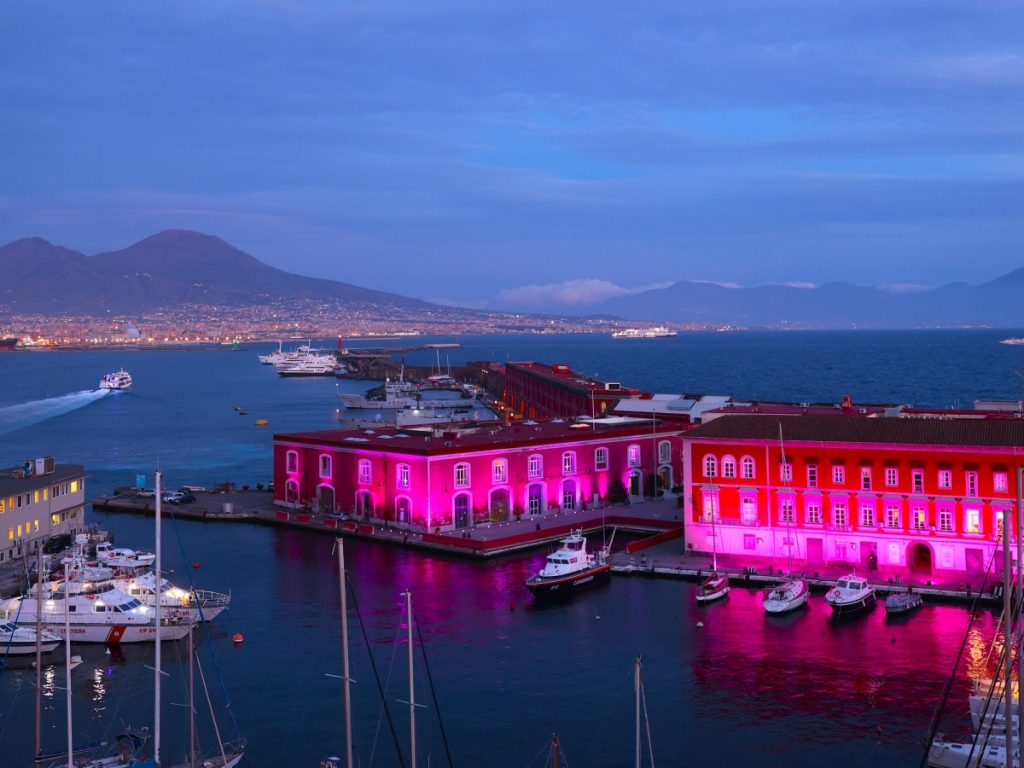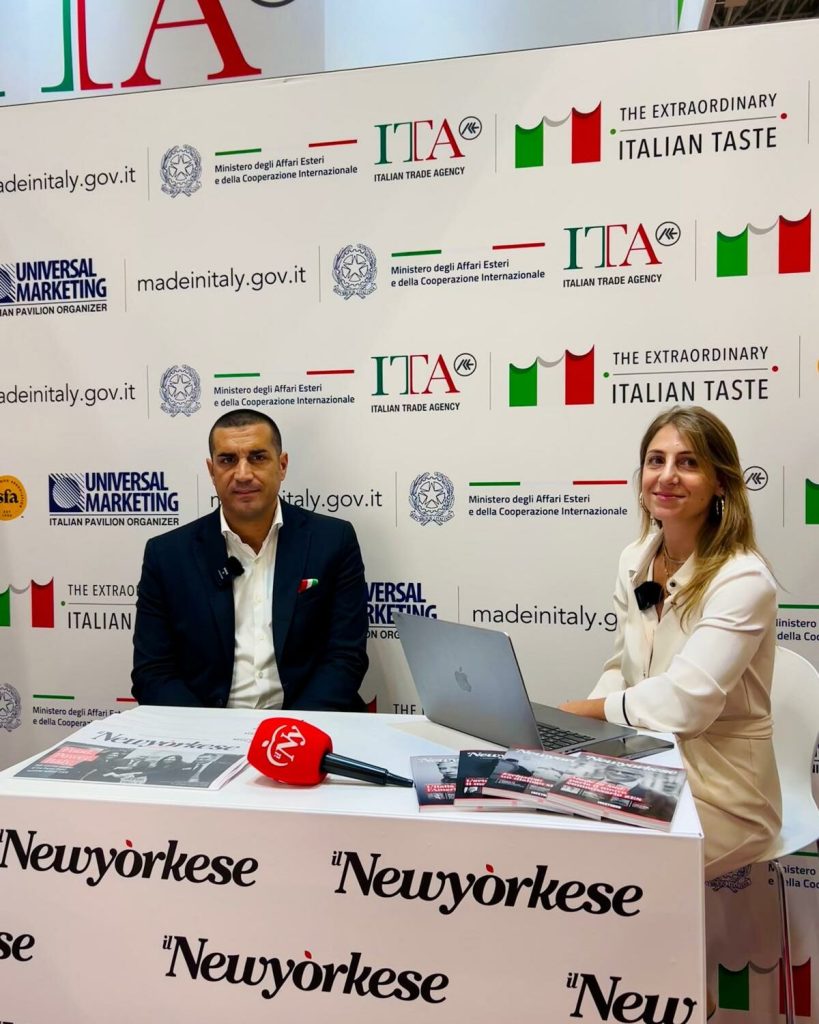The lighthouse at Molo San Vincenzo, normally not open to visitors, becomes a suspended stage over the Mediterranean from July 28 to August 2, 2025. For six days-five sunsets and one sunrise-Naples celebrates the 2,500th anniversary of the founding of Neapolis with a festival that focuses on the sea, departures and returns. A way to tell the story of the city through what has most defined it: the continuous movement of people, sounds and stories.
The programming of “Al Faro – Festival,” an original project by Napoli 2500 for the City of Naples, conceived and curated by Laura Valente, mixes villanelle and moresche, poetry and Mediterranean melodies, tradition and new languages. On the bill, among others, the Tanghedia soloists, the “Tamburi del Faro,” sung poetry by Maurizio de Giovanni, an unprecedented duet between Peppe Barra and Vinicio Capossela, a dawn concert with the sea “playing” along with a mandolin orchestra, and then FicuFresche, La Niña with Raül Refree, Eugenio Bennato, Enzo Gragnaniello, Tony Esposito and Lina Sastri.
The festival is sewn around the memory of migration. The opening on July 28 at 8:45 p.m. will feature a connection with Ellis Island; on July 30, at 9 p.m., there will be a second direct thread with Little Italy. It is no coincidence that the project ideally starts from Ellis Island, the small island in front of New York that welcomed more than twelve million immigrants, many of them Italians, in the late 19th and early 20th centuries. In fact, a symbolic long-distance dialogue between the Statue of Liberty and San Gennaro, patron saint of the Neapolitan city, will inaugurate the festival: two icons that respectively represent the welcome and protection of travelers.
Leading the narrative is the image of the ball of yarn unrolling from the ships, the last link between the departors and the families left at the docks. “Between 1860 and 1960 the largest exodus known to modern history took place: about thirty million Italians left the Port of Naples,” recalls Valente, who with this review tries to reknit that broken thread, bringing together “roots and experimentation, ancient voices and new visions.” It is a way to restore meaning to a place-the lighthouse-that for generations was the last image of home.
The festival is funded by the Metropolitan City of Naples, with the collaboration of the Port Authority of the Central Tyrrhenian Sea, the Navy and Ellis Island. “Opening a symbolic place like the Lighthouse to the city means consolidating a deep bond between Naples and its sea,” said Mayor Gaetano Manfredi. For Tourism Councillor Teresa Armato, it is an example of cultural tourism “connected to memory” and able to speak to the present. The Navy, which has managed the national light signals since 1911, claims the emotional value of the lighthouses as a “promise of homecoming,” while the Port Authority emphasizes the path of returning the two kilometers of the pier to public use.
The initiative also represents an important step in the redevelopment of the San Vincenzo Pier, part of the urban and cultural plan to return a key historic space to Neapolitans. Originally built as a strategic fortification during the reign of Ferdinand I, the pier gradually became the symbol of the maritime and commercial city until its gradual abandonment, culminating in recent decades.
At the same time, the photographic exhibition “Radici migranti” curated by Raul Lo Russo will be inaugurated in the spaces of the Naval League. The exhibition will recount, through images of faces and gestures, the migratory experience of those who departed from the Neapolitan port, with archival photos and contemporary contributions, with the intention of exploring how yesterday’s stories continue to be reflected in today’s migratory paths.
Finally, visual art also finds a place in “Al Faro”: illustrator Stefano Marra has created a graphic work especially for the event that visually synthesizes the encounter between historical memory and contemporaneity, a symbol of a festival that aims to become a permanent fixture, linking Naples not only with its own past, but with a broader Mediterranean cultural landscape.
All events are free while places last and must be booked on Eventbrite (“At the Lighthouse Festival”), with reservations opening on Wednesday, July 23 at 12 p.m. Access to the pier will be possible only via organized shuttles: for the evenings, departure is between 7 p.m. and 8 p.m.; for the sunrise concert between 4 a.m. and 5 a.m. The meeting point is at the Molosiglio Gardens on Admiral Ferdinand Acton Street.
The article From the Naples Lighthouse to Ellis Island: a festival to tell 2,500 years of stories comes from TheNewyorker.



